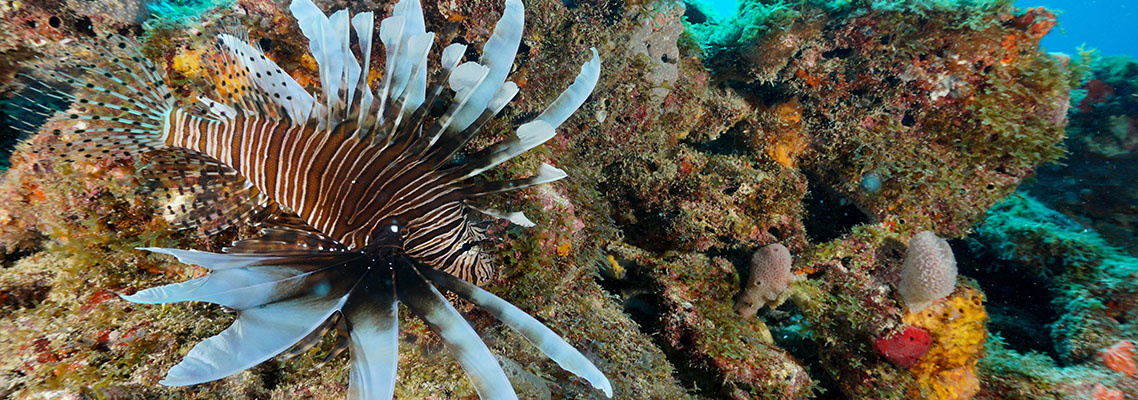Lionfish are the New Hogfish
- Posted on
- By Jim “Chiefy” Mathie
- Posted in Scuba Tips

Setting our sights on Lionfish in April.
April is the month the Chiefy Crew sets our sights on lionfish. Don’t get me wrong, we target lionfish all year long, however, April is an off month for us Underwater Hunters.
With lobster season ending on March 31st and hogfish and grouper season re-opening on May 1st, it makes sense to fill up our Zookeepers ® with lots of lionfish. In April, we put away the lobster gear of bags and snares, allowing us to add a Zookeeper ®, which is a plastic tube with a one way insert to place the lionfish from your spear tip directly into the chamber. The key is to not place your hand anywhere near the opening and only hold the Zookeeper ® by the handle. The device is designed to fill with water and will sink underwater. This design allows the Zookeeper ® to drain quickly when you get on the surface.

Throughout spiny lobster season, we continually see lionfish as they like the same areas of the reef. Our tactics haven’t changed much for harvesting lionfish in April, as we’re still close to the reef, looking at almost every nook and cranny. A side benefit to this strategy is to find new ‘secret lobster spots’ for next season.
There are 18 venomous spines, which is the greatest danger from harvesting lionfish. Getting stung will cause swelling and is very painful, however, there’s no one who has been known to die from getting stung. There’s no known natural predator for lionfish in the Atlantic Ocean, leaving it to divers to keep the population in check. When we’re not using the Zookeeper ®, we carry a pair of shears to trim the spines underwater. I usually trim them leaving them on the spear tip or insert my thumb in their mouth, like a largemouth bass. There’s risk to trimming them underwater so I recommend paying attention to what you're doing.
When we place them in the Zookeeper ®, there’s a screw off end to remove the speared lionfish and place them directly on ice in the boat. We’ll then trim them back at the dock; however, you still need to pay attention as the spines can still cause pain while you’re filleting them.

There’s a great benefit harvesting lionfish as they taste great. There’s no venom in the meat making them 100% edible. It’s a pure white filet, without a bloodline and has a sweet taste with a flaky texture. For you non-divers, local fish markets and restaurants carry them and even Whole Foods has them for sale.
The way to get rid of the invasive species is to eat them. I like to sauté mine with a little olive oil and garlic with your favorite spice. They’re also great as a ceviche or raw, but almost any cooking will work. Some folks fry the lionfish whole which allows for a great presentation but requires eating the crunchy skin and meat directly off the bones. You can try the recipe Chili Lime Lionfish from the Cooking the Local Catch series...click here.
Either way, you’re doing great things for the environment by removing and eating lionfish. Let’s focus on harvesting and eating lionfish this month to make sure we do our part for the reefs.

